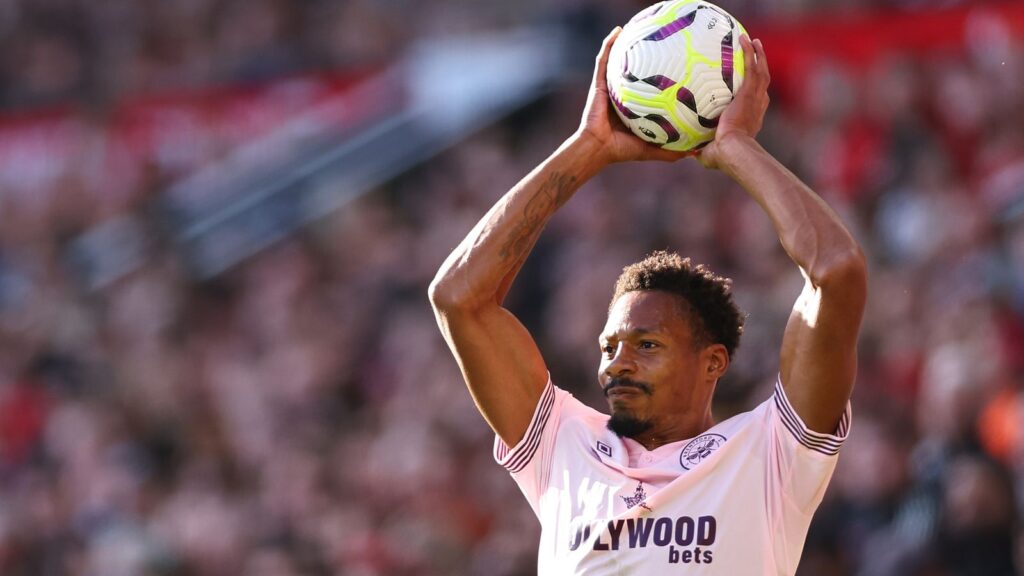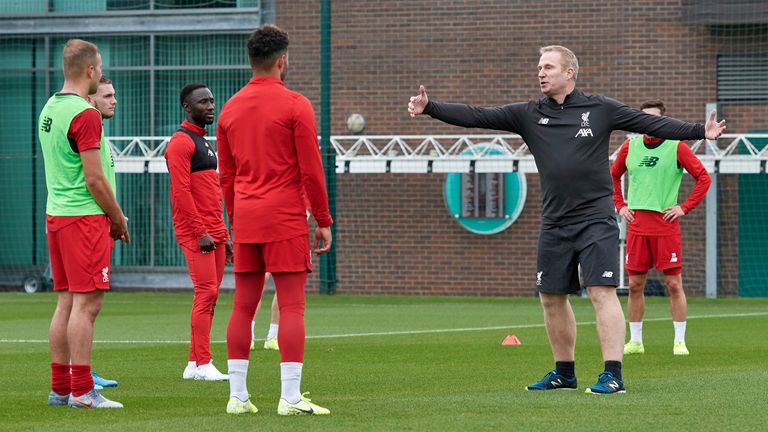Thomas Tuchel has declared that “the long throw is back” and he is not wrong. “Long throws have been a feature of this Premier League season,” Jamie Carragher told Monday Night Football recently. And the statistics bear this out.
Using the definition of a long throw into the penalty box as being one that travels 20 metres, the data shows that the number of such throw-ins per game has almost doubled so far this season, after rising more steadily over the previous five seasons.
In fact, the most recent goal that was scored in the Premier League – Ismaila Sarr’s late header in Crystal Palace’s win away to Aston Villa – came as a result of a long throw into the penalty box by Jefferson Lerma. But Palace are by no means alone in exploiting this.
Brentford have long been exponents of the tactic and their former boss Thomas Frank has shown an appetite to continue this work at Tottenham. On the opening weekend of the Premier League season, the majority of teams attempted a long throw.
This is a significant shift, up from only four on the first weekend of last season, according to Opta. The big question is why it is happening. The summer is a period to reassess and the analysts will have noted Brentford’s remarkable success in this field.
The number of expected goals from throw-ins, per Twenty3, increased dramatically even last season, worth over 26 goals, up from around 10 goals in the previous two campaigns. It was not just that the long throw was used, it was that it proved effective.
Brentford were the masters. While Palace ranked second, with their throw-ins creating chances worth 2.63 goals, Frank’s Bees were well ahead, theirs yielding an expected-goals total of 8.75. It is no coincidence that they worked with Thomas Gronnemark.
“When people look at those statistics and the chances that those clubs are creating from long throws and the goals that they are scoring from long throws, I think many clubs are saying, ‘Wow, we should also take long throw-ins,’ Gronnemark tells Sky Sports.
“You could say I have been a part of that change.”
Gronnemark’s impact
The Dane was the original throw-in coach, in the Guinness Book of Records for his own long throw, and has been working with players for over 20 years now. It was Jurgen Klopp who brought him to the Premier League to work with Liverpool on their throw-ins.
The focus of that work was different – aimed at keeping the ball from throw-ins, what Gronnemark calls ‘fast and clever’ throws. Liverpool transformed their throw-ins upon his arrival, one of the many marginal gains that helped Klopp gain an edge on the rest.
“In my first season, when we won the Champions League, we went from 45.4 per cent to 68.4 per cent possession on throw-ins under pressure, where the players are marked. We went from 18th – above only Swansea and Huddersfield – to number one.”
But for the past three Premier League seasons, he has worked with Brentford. They have topped the charts for expected goals from throw-ins in each of those seasons. “You need a world-class long throw-in taker,” he explains. “But you also need a strategy.”
Length of throw is key
Gronnemark adds: “The main reason for the change is because we can see from the data that it works. In the football world, people see some data and change behaviour because of that data. But there is way too little knowledge about how to be successful.”
For Gronnemark, size matters. “There are gigantic differences between throwing to the edge of the six-yard box or throwing to the first post,” he says. “And some of my players can even throw the ball to the penalty spot or even longer.” That opens up possibilities.
“You can create a more direct danger, that is one thing. But the other big thing is that you can create more variance with the throw. There is the option to flick it on. It is much harder to mark. Defending becomes much more difficult if you can throw it longer.
“There is more space to defend so you do not know where to put your best header of the ball. And even if you win the header, you might just flick it on. The best throw-ins are coming in flat and fast so often goals can still come from the defender flicking it on.”
One of the first things that Frank did during pre-season with Spurs was to line the players up and establish who could throw it furthest. It was Kevin Danso who took the job against Paris Saint-Germain but Lucas Bergvall has also been tasked with the role.
“They could be much better,” argues Gronnemark. “Coaches do not think about that. If they have someone, they use them. If they don’t, they don’t. They don’t think about improvement. A lot of world-class long throw-in takers were really bad at the start.”
The best that Gronnemark has worked with is Mads Beck, now at FC Midtjylland. He can throw almost 41 metres, which is seven more than when they started working together. “Most improve between five and 15 metres. Sometimes it only takes one session.”
Throw-ins are overlooked
Gronnemark has long been frustrated by the tendency to overlook these nuances of the humble throw-in. His interest in the matter feels more than professional, it is a passion. “Some say it is just a throw-in.” He pauses for dramatic effect, before exclaiming, “No!”
He continues: “It is like any other football action on the pitch. You can keep possession and score a goal. To be honest, I am amazed about the throw-in decisions I see in a league where you play for billions of pounds. It all comes down to a lack of knowledge.
“How many times do you see a match and a team loses the ball after a throw-in and the commentator does not say anything at all? Maybe if there is a goal. But no one says anything about the movements, the space creation. It is just accepted that you are bad.”
A curious aspect of the rise of the long throw is that one might expect Gronnemark to be fully behind it. It is good for business, after all. But instead he questions whether the teams attempting to copy Brentford’s tactics really understand what they are doing.
“If you ask me, maybe they shouldn’t be doing it, at least not all of them. And the reason why they shouldn’t is because they don’t have enough quality on the long throw-ins. The clubs who have been really successful under me had world-class long throw-ins.
“If you can only throw to the edge of the six-yard box then of course you can be lucky and create a chance. But if you ask me, you need to have world-class long throw-ins to be able to be really dangerous. By that I mean reaching the first post or even longer.
“A lot of the teams in the Premier League who are taking long throw-ins now, they’re just not good enough, but they still do it because a lot of people are really fascinated by the long throw-in. They are fascinated because it can create chaos, it can create a chance.
“But the other thing is that, let’s say you do score once in a while from a long throw-in. You might say, ‘Wow, they are successful.’ Not necessarily. Because you never know if they would have scored from another type of throw-in near the opposition penalty area.”
Poor space creation
Here too, on the subject of these other types of throw-in, Gronnemark is far from encouraged. “To be honest, I am in total shock because after I was at Liverpool, I expected teams would start to be really good. If you ask me, it has almost been worse.”
He watched the game between Manchester United and Arsenal, logging the success of their throw-ins under pressure at 25 per cent and 29 per cent, respectively. For Newcastle against Liverpool, the stats were 20 per cent and 33 per cent, respectively.
Kieran Trippier’s poor throw actually led to Ryan Gravenberch’s opening goal. He threw it to a Liverpool player. “I am shocked about the level of space creation in the Premier League, to be honest. Newcastle did not know how to create space,” says Gronnemark.
“There was no real connection between the thrower and the other players. The quality of space creation generally is bad. Teams throw into high-pressure situations where there is a big risk that their opponent will win the ball and either keep it or counter-attack.
“Set-piece coaches tend to treat throw-ins like corners or free-kicks. They have one or two options. But the challenge comes when the opposition’s marking pattern is right from the start. They try a run and if it does not work, they do not know what to do.”
Perhaps this is another reason for the return of the long throw. Pressing structure have become much more sophisticated in recent seasons, with man-to-man marking also making a comeback. If teams are losing the ball from throw-ins, maybe it is better to look long.
“The quality of space creation from short throw-ins is already really poor so if you put in a low quality long throw then you will likely score more goals from doing that,” agrees Gronnemark. With the trend now established, expect more goals to come from long throws.







